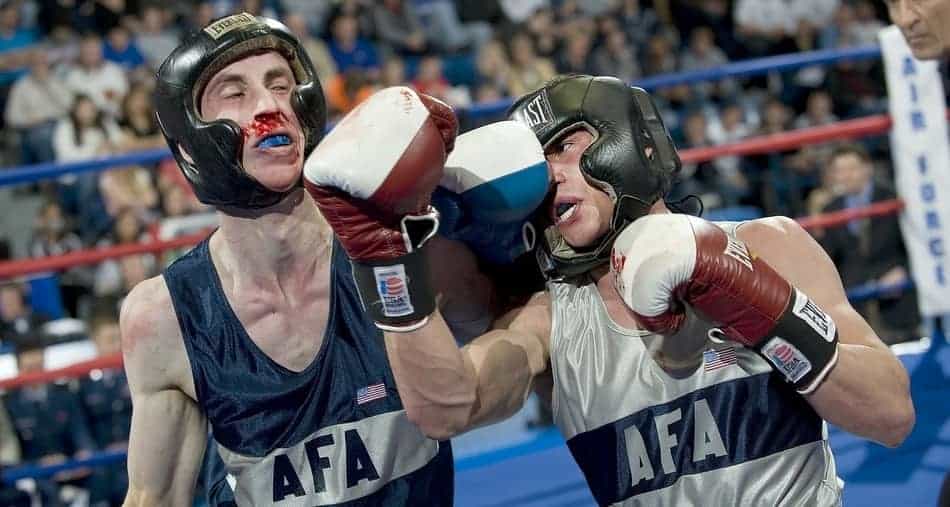
Whether in a fight or in sparring, if you box, eventually you will get punched hard. If it happens in sparring, you can just take a timeout until you recover. But if it’s a real fight or a boxing match, that’s not an option. Because, after lands a big shot, your opponent will start attacking you much more aggressively, trying to finish you. And if you want to survive, you need to recover. And you need to do it fast.
If you wanna know how to do it, you are in the right place. The main purpose of this article is to give you the best tips on how to survive and recover from getting hit badly, during a fight. But there are also tips on how to condition yourself before the fight, and what to do to regain your health faster after the action is over. Also, notice that we discuss only recovering from punches in the head and not from body shots (such as the liver punches).
Recovering fast is the only option you have after getting a hard blow to the head. But to learn how to prevent that from happening, check out my article on How to Take a Punch in Boxing Like a Pro (22 tips) (opens in a new tab) after you read this one. You’ll learn all things you can do to reduce the impact of the punches dramatically and avoid taking any damage.
But now, let’s get back to the recovery:
What happens after getting punched hard in the head?
Boxing isn’t a safe sport. And actually, it’s one of the most dangerous ones. That’s because it can cause many different injuries, from which the most serious ones are the brain traumas.
A hard blow on the chin, or on another vulnerable place on the head, (such as the spot behind the ear, or behind the head), can cause a concussion or a knockout.
But that happens rarely. Most of the times such shot will just daze you for a short period of time. Your legs may start wobbling and it will be hard for you to keep balance. In such situations, you will become an easy target for your opponent, who will be really motivated to make you hit the mat. Which will probably happen…
unless you know what to do:
1. Don’t follow your natural instincts
There are two types of people, according to what they do after they take a big punch in the head:
- Reaching – Some boxers, start reaching forward, trying to grab the hands of the opponent. That’s a natural instinct which purpose is to help the person to stop additional shots and to create a distance between himself and the aggressor. Usually, the taller boxers do that because they think that their long reaches will help them. And most of the rimes they are completely wrong…
Yes, sometimes, the reach can be really useful, but it won’t help you to create more distance in such a situation. Because your opponent may duck under your hands or just push them away and land more shots. Also by reaching your hands, you leave yourself open for hooks and overhands.
- Going backward (or running away) – What the second type of people do, after a hard shot, is even more dangerous. They start going backward or sometimes even turn their back trying to run away. From a survival perspective, this reaction (to try to run away from the threat) is understandable.
But in boxing, it’s not the best approach to the situation. Because when you turn your back and your opponent starts chasing you down, you won’t be able to see his punches and defend them effectively.
Even if you just move backward (without turning your back), again you will be in a bad position – just at the end of the other boxer’s punches, where they are most powerful. Also, he will eventually, press you against the ropes. And that’s not a good place to be especially when you are dazed by a hard blow.
After you know what not to do, here is what you SHOULD do to survive the rest of the fight:
2. Defensive shell
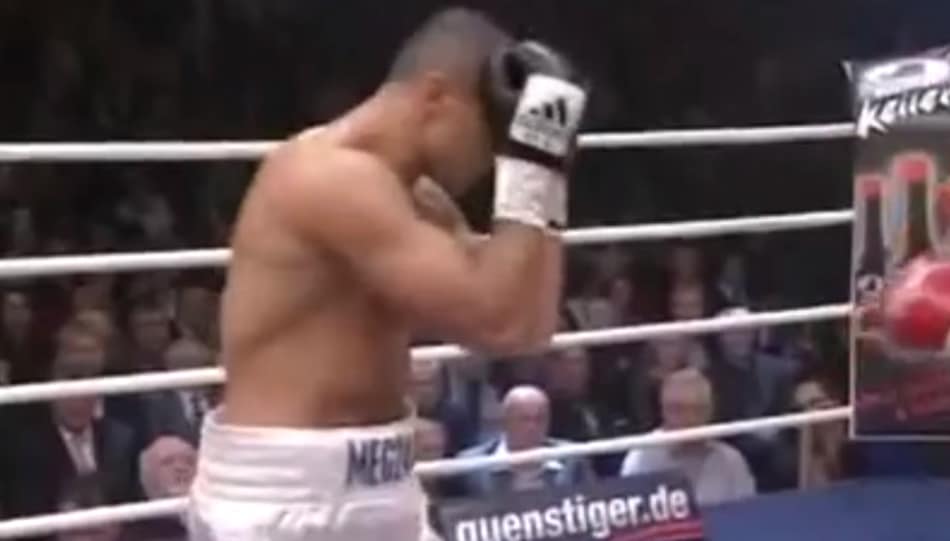
There are lots of defensive guards in boxing. Great examples are the crossguard or the Philly shell. If you are more experienced and you are used to them, and they work well for you, then use them. But for beginners what I recommend is the Defensive shell.
Here is how to do it step by step:
- Get your hands up, and place them on your forehead
- Don’t make fists, open your hands a little bit. – By doing this your gloves will fill more space and protect you better
- You index fingers need to be on your forehead, touching each other in the middle of it – Thus you won’t block your vision
- Your elbows need to be positioned on the ribs, protecting your body
3. Look through your gloves
When you are in a defensive shell, it’s really important to look through your gloves so you can see the punches. That way you will know how to react to them. For instance, if your opponent throws a hook, you can block it with your forearm, and if it’s a jab, you can just use your glove to parry it.
Another important thing is to look for the bigger punches. Here is what I mean by that: Even if you are wobbling after a heavy shot, if the other boxer is clever, he won’t start just throwing wild punches at you, trying to knock you out.
Chances are he will set up the bigger blows with lighter punches (such as the jab). For example, your opponent may throw a jab just to distract your attention from the right overhand behind it. And the overhand is the dangerous punch that can knock you out if it connects clean. So be ready to block the bigger punches and don’t react too much to the less powerful ones – just parry them.
Tip: Try to remember the combinations that your opponent most often uses. That way you will know the direction from where the next punch will come which will help you defend yourself against it.
4. Move into your opponent
Like we already know, after taking a heavy shot, your senses may tell you to run away from the attacker. So it won’t be so easy just to move forward. But you need to do it. And there are 4 reasons why:
- Your opponent may not expect it – By moving forward just after you just ate a powerful shot will confuse your rival. That will give you some extra seconds to recover.
- You will be too close to him so he won’t be able to build huge momentum in his punches. So he won’t be able to hit you with his full power.
- You can push him off balance – So you will have more time to recuperate or even to counterattack
- You will prevent being pressed against the ropes
5. Enter in a clinch
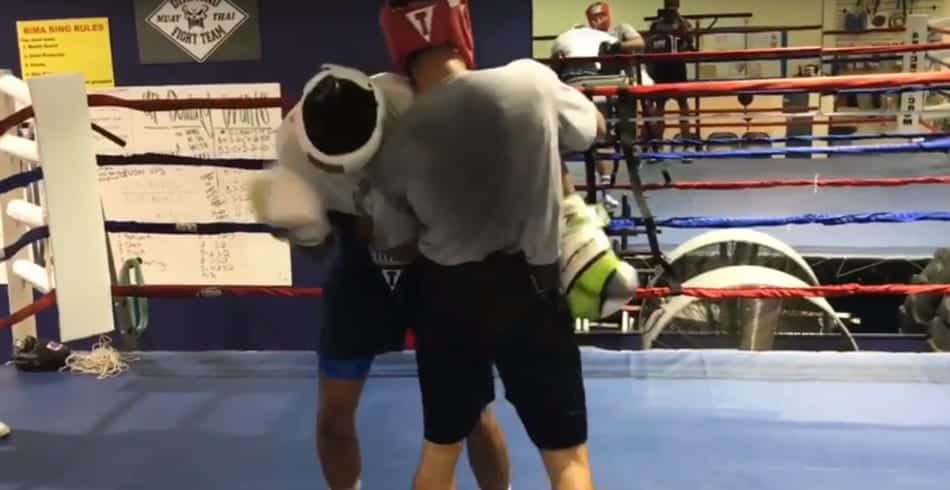
After you are close enough, you need to tie up. In boxing, the clinch fighting isn’t allowed so the referee will probably break you up right away. But still, that gives you some extra time to recover. And in such situations every second count.
Let’s go through the steps:
- Hug your opponent’s arms over the shoulders. That’s called overhooks. That way you will prevent him from punching you.
- Place your head on his lead shoulder. By doing this you will protect it from power hand blows.
- Don’t wrestle with your opponent. That’s will cost you too much energy. Just make sure he can’t pull his hands out.
And of course, release the other boxer when the referee tells you so.
6. Use your lead hand and footwork to create distance
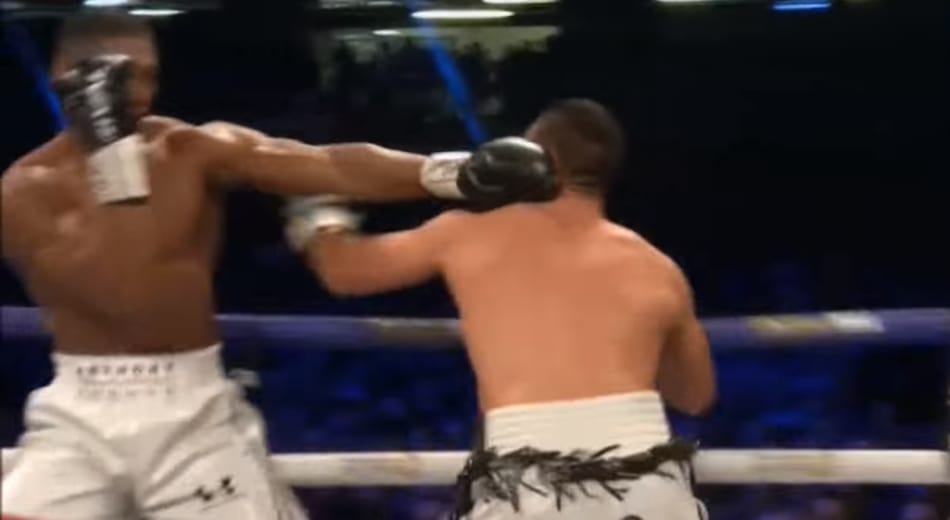
If you have heigh and reach advantage over your opponent, to go towards him after a big punch maybe isn’t the best idea. Because the close distance is where the short boxers are most effective. A great example of that is Myke Tyson. That’s why he always pressured his rivals and always tried to fight inside.
So if you are fighting against a shorter fighter and he stuns you with a big punch, you need to maintain a distance until you recuperate. Otherwise, he will probably finish you with powerful short-range hooks and uppercuts (Myke Tyson style).
You can create distance by extending your lead hand forward. Also, use your footwork to circle away. Don’t move just backward, try to circle around your opponent while maintaining a distance. And avoid his power hand – if he landed the big shot with his right hand, circle to your right (or to his left). That way he won’t be able to catch you again with his right. And circle in the opposite direction if the left hand is the more dangerous one.
You can also use the lead hand to measure the distance for counter punching. Once your opponent comes so close to you that you can touch him with your lead hand, you will know that he is in the range of your power hand cross. So you can land it on him and he won’t be able to fire back, from this distance, because of his shorter reach.
I know I said that reaching isn’t the right approach but that’s not the same. In this case, you aren’t just reaching forward, but also using your footwork to create distance. And also you are using only your lead hand, while the rear one is up, protecting your head.
7. Don’t put yourself back into the same position
If, for example, your opponent land the punch that wobbled you where you was pressed against the ropes, DON’T go back there for the rest of the fight. Do everything possible to avoid that place.
And this does not only apply to physical locations. For instance, if the hard shot was actually a counterpunch, landed when you tried to throw a certain combination, don’t throw that combo again. It’s obvious that the other boxer can read it and counter you again.
To avoid making the same mistakes is common sense, but in boxing, sometimes even the pro fighters don’t do it. So it’s important to mention it.
*The way you adjust your game during the boxing match (or a sparring session) is called “fight IQ”.
8. If you get dropped – don’t stay right away
Sometimes the punch can be so powerful and accurate that it can directly knock you down. And you may even not realize what happened and how you get on the ground.
But, in other cases, you may probably just lost your balance. But still, from the perspective of the referee that may be a knockdown. If that’s the case I recommend taking your time even if you are able to get up right away. Wait until the count of 7 or 8 and then get up. Like we already know, every second is priceless when it comes to recovering from a heavy punch.
Of course, if you are completely out, try to get up as quickest possible. Because if you wait until 8, you may not make it. Which is a really stupid way to lose a boxing match…
And when you manage to do it, use the tactics, we already discussed to gain some time and to recover.
9. “Rope a dope”
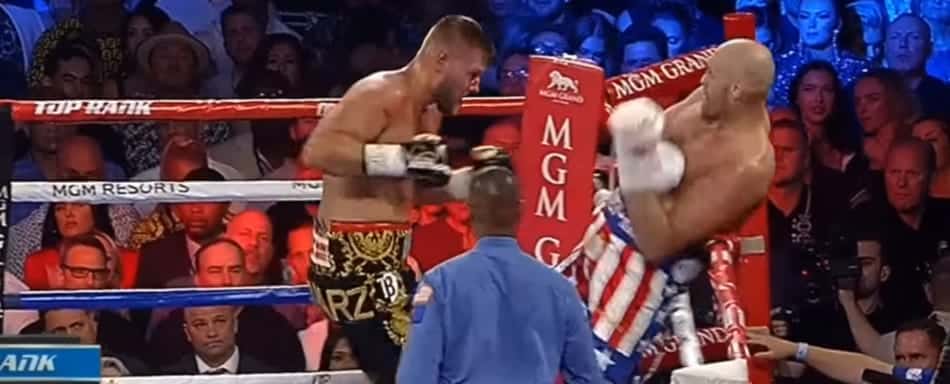
Rope-a-dope is boxing strategy whose purpose is to make your opponent exhaust himself while he is trying to hurt you. It’s associated with Muhammad Ali who used it against some of his opponents, including George Foreman and Joe Frazier. During the fights, Ali was lying against the ropes using them to absorb some of the power of the shots and also as a support so he can save more of his energy.
I am not saying it’s a good idea to copy the tactics of Muhammad Ali (especially if you are a beginner). But you can use them to survive a bad situation in the ring. For example, if your legs are wobbling after a hard punch, and you aren’t sure you how long you can keep standing, you can go to the ropes and use them to support you until you recover.
The ropes can be really helpful, but I recommend using them only if you don’t have other options. Because to be pressed against the ropes or in the corner is the second worst place to be in the ring (the first one is on the mat).
10. Breathing
If you don’t breath properly, during a fight, you will gas out quickly. And the more exhausted you are, the easier is for your opponent to knock you out. That’s because you become slower, you can’t keep your guard high enough, your punches become less powerful and precise, etc.
The correct breathing is a problem for the majority of the beginners. And after taking a big shot, it’s getting even worse. Because you can’t think about the proper breathing while you are panicked and dazed, and someone is trying to finish you with flurries of punches. So it can be really tough.
To breath properly in boxing, you need to exhale every time you throw a punch (when it connects, not before that because you may telegraph it). I was often forgetting to do it, so my coach told me a little trick – to count my punches. It really helps you to control the moment when you exhale and to do it just at the end of the punch.
And when you are in a defensive shell you can exhale every time your opponent lands a blow. That can even help you to reduce the impact of the punches (especially if they are body shots).
11. Keep the chin tucked in
The best place to land a blow if you want to knock someone out is on his chin. So when trying to survive, you need to do everything possible to prevent getting punched there. You can do that by keeping it down, tucked in your shoulder which will protect it.
That way you, will take the most of the punches on your forehead. Which is much better because that is the hardest part of your skull and it can withstand enough shots, so you can make it to the end of the fight.
Tip: Keep the chin down, and the shoulders up, but don’t duck your head too much. Because by doing this, you leave yourself open for uppercuts.
12. Use a wide stance
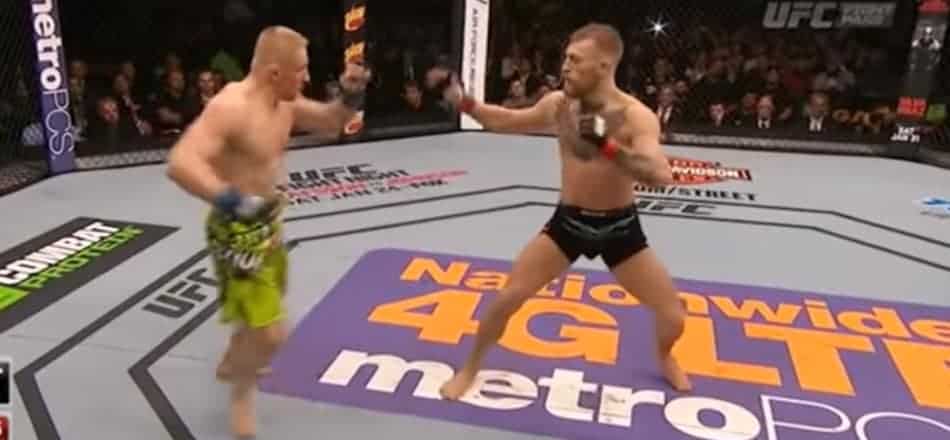
The wide stance can really help you to keep your balance. So after you get hit and you are dazed, try to stay in such a stance until your recover. Also, you can bend your knees a little bit. By doing this your center of gravity will be closer to the ground and you will improve your balance even more.
13. Allow your opponent to pressure you during sparring
After a powerful punch, sometimes your rival will press you against the ropes or in the corner. Which can be really dangerous, especially if you don’t know what to do from there.
So I recommend, allowing your opponent to press you there, during the friendly sparring. Thus you will gain some experience being in such situations. And when it happens in a real fight, you won’t panic and you will know, what you can do to get out of there.
You can also try a sparring where only your sparring partner can hit you and you can just move and defend yourself. You can move, circle, block parry, slip, bob and weave but can’t throw or fake punches. It’s a great exercise because the other boxer knows that you won’t hit him, so he feels more comfortable trying different things. Do that and you will improve your defense significantly.
14. Fire back
If you just stay in defensive mode, after getting wobbled, and the other boxer starts to throw flurries at you, the referee may stop the fight just because you don’t fire back. So be ready to counterpunch.
Your opponent may leave himself exposed while trying to knock you out. And that’s a perfect opportunity to land some counters. The best punches you can use in such situation are the short lead hook or straight punches. They will be really effective especially if the opponent starts throwing heavy, wild shots.
Because the straights and the short hooks travel less distance than the wild shots which will make them land first (when both punches are thrown at the same time). That way you can catch your rival clean and even knock him down/out.
15. Talk to your opponent
By talking and taunting your opponent you can actually hide that you are hurt. Which is great because he will play safer. He won’t just rush forward trying to finish the fight.
Also, when taunting him, your rival may think that you are just pretending to be hurt and you are trying to set a trap. That will make him much more cautious which will gain you more time to recover.
That way Muhammad Ali tricked Joe Frazier in their first fight. Joe hurt Ali bad but Muhammad didn’t stop talking to him. That made Joe hesitate when he has a chance to finish Ali. Because he was thinking that Ali is just pretending to be hurt and tries to bait him to attack so he a counterpunch.
Sun Tzu (Art of war): “All warfare is based on deception. Hence, when able to attack, we must seem unable…”
And the opposite is also true.
16. Conditioning
There are some muscle groups that can decrease the impact of the punches. These are the neck and the jaw muscles. Train them and you will take less damage during the fights (or sparring).
Also, it’s a good idea to train your shoulders. That will help you to keep your guard up longer, (which can be really hard in the later rounds).
And as I already mentioned, the more exhausted you are the easier is for your opponent to knock you out. So work on your cardio. And while doing so, don’t do low pace-long-distance running (like 5 miles+). It’s much more effective if you do sprints for around 1:30-3:00 min, running with 80% of your max speed. This exercise will prepare you for a boxing match much better.
Recovering after the fight
*If you take a big shot, during a fight or a sparring, it’s possible to have a concussion. Even if you don’t have any symptoms in the first place it’s a good idea to see a doctor.
The only way to recover faster from knockout, concussion or just from a hard shot in the head is to rest. And while doing so, you shouldn’t do any intense exercises. Avoid doing sparring, running, or any cardio exercise that requires too much moving. You can do heavy bag work, pad work, or shadowboxing, but still, take it easy.
How much time do I need to recover?
After a knockout loss or a concussion, you need 30-90 days to recover completely.
That’s why in the combat sports competitions, after a loss by a knockout, the athletes need to wait 90 days before they can fight again.

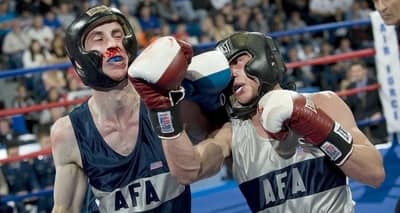
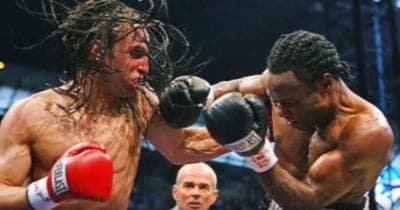
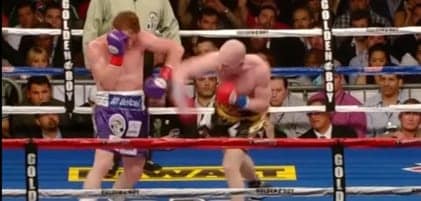
Okay, I just learned a whole lot about boxing! Rope a dope totally makes sense…I’ve seen guys doing this and now I know why. Also read another post where you mention the reason boxers wear big shorts…very cool…now I know! Thanks!